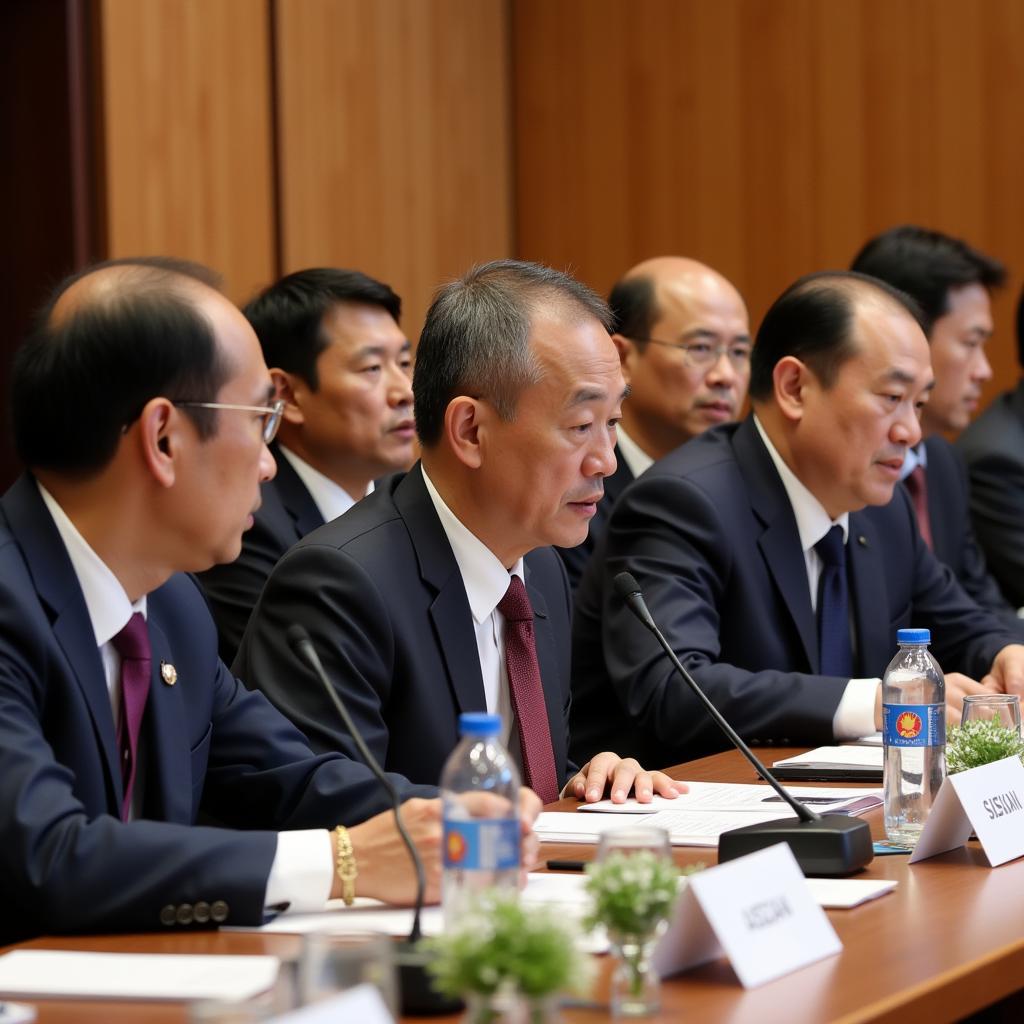The Association of Southeast Asian Nations (ASEAN) has emerged as a beacon of regional integration, boasting significant achievements in economic, social, and political spheres. However, the journey towards achieving its goals is paved with challenges. This article delves into the key successes and hurdles facing ASEAN, providing a nuanced understanding of its complex landscape.
Economic Progress and Integration: A Story of Growth and Opportunity
ASEAN has witnessed remarkable economic growth, evolving into a global economic powerhouse. The establishment of the ASEAN Free Trade Area (AFTA) has facilitated intra-regional trade, while initiatives like the ASEAN Economic Community (AEC) blueprint have fostered deeper economic integration.
 ASEAN Economic Growth
ASEAN Economic Growth
The region’s strategic location and youthful population have attracted significant foreign direct investment, further propelling its economic engine. Moreover, ASEAN has actively pursued free trade agreements with major economies, bolstering its position in global value chains.
Social Development and Human Capital: Investing in People
Recognizing that human capital is its greatest asset, ASEAN has prioritized social development. Efforts have been directed towards improving healthcare, education, and social welfare systems. Initiatives promoting gender equality, youth empowerment, and cultural exchange have contributed to a more inclusive and vibrant society.
 ASEAN Education Initiative
ASEAN Education Initiative
However, challenges remain in addressing poverty, income inequality, and access to quality education and healthcare, particularly in rural and marginalized communities.
Political Cooperation and Security: Navigating a Complex Geopolitical Landscape
ASEAN has played a pivotal role in maintaining peace and stability in Southeast Asia. Its commitment to dialogue, consensus-building, and non-interference in internal affairs has fostered a conducive environment for regional cooperation.
The ASEAN Regional Forum (ARF) serves as a platform for dialogue on security issues, involving major powers with strategic interests in the region. However, maintaining ASEAN centrality and unity amidst rising geopolitical tensions, territorial disputes, and non-traditional security threats remains an ongoing challenge.
Looking Ahead: Challenges and Opportunities for ASEAN
While ASEAN has made significant strides, it faces critical challenges in the 21st century. These include:
- Narrowing the Development Gap: Addressing economic disparities between member states is crucial for inclusive and sustainable growth.
- Enhancing Institutional Capacity: Strengthening ASEAN institutions and mechanisms is vital for effective decision-making and implementation.
- Navigating Geopolitical Dynamics: Maintaining ASEAN unity and centrality amidst great power rivalry and evolving security threats is paramount.
 ASEAN Future Summit
ASEAN Future Summit
Despite these hurdles, ASEAN has the potential to further enhance its global standing. By leveraging its economic dynamism, demographic dividend, and strategic location, ASEAN can:
- Become a Leading Voice for Multilateralism: Championing a rules-based international order and promoting dialogue and cooperation on global issues.
- Drive Sustainable Development: Advancing the UN Sustainable Development Goals and leading the way in green growth and climate action.
- Foster Innovation and Digital Transformation: Harnessing technology and innovation to create opportunities for its people and businesses.
Conclusion: ASEAN’s Journey Towards a Shared Future
ASEAN’s journey is a testament to the power of regional cooperation. While challenges remain, its achievements provide valuable lessons for other regions striving for integration and development. By addressing its challenges head-on and seizing emerging opportunities, ASEAN can continue its trajectory towards a prosperous and peaceful Southeast Asia. For a more comprehensive understanding of ASEAN’s journey and future prospects, numerous resources are available online, including insightful ASEAN achievements pdf documents. These resources provide valuable data and analysis, offering a deeper dive into the complexities of this dynamic region.
FAQs
1. What are the main pillars of the ASEAN Community?
The ASEAN Community is built on three pillars: the ASEAN Political-Security Community, the ASEAN Economic Community, and the ASEAN Socio-Cultural Community.
2. How does ASEAN promote regional peace and security?
ASEAN promotes dialogue, consensus-building, and non-interference in internal affairs. It also engages in preventive diplomacy and conflict resolution through platforms like the ARF.
3. What are some key challenges to ASEAN integration?
Key challenges include narrowing the development gap, enhancing institutional capacity, and navigating geopolitical dynamics.
4. How can I stay updated on the latest ASEAN news and developments?
You can stay updated through reputable news sources, ASEAN official websites, and think tanks specializing in Southeast Asian affairs.
5. Are there opportunities for foreigners to work in ASEAN?
Yes, ASEAN’s economic growth has created job opportunities for foreigners, particularly in sectors like technology, finance, and tourism. For more information, explore ASEA employment services.
If you’re eager to learn more about ASEAN’s journey and its impact on the region, take a look at our other informative articles:
For any inquiries or assistance, please don’t hesitate to contact us. Our team is available 24/7 to address your questions and provide support. You can reach us via phone at 0369020373, email us at [email protected], or visit our office located in Ngoc Lien Village, Hiep Hoa, Bac Giang, Vietnam.


